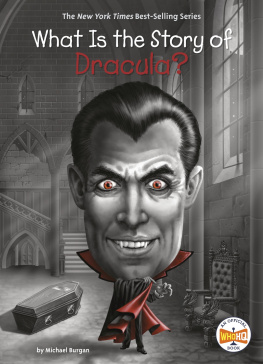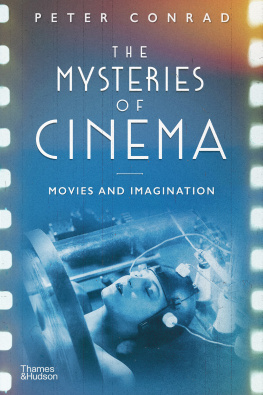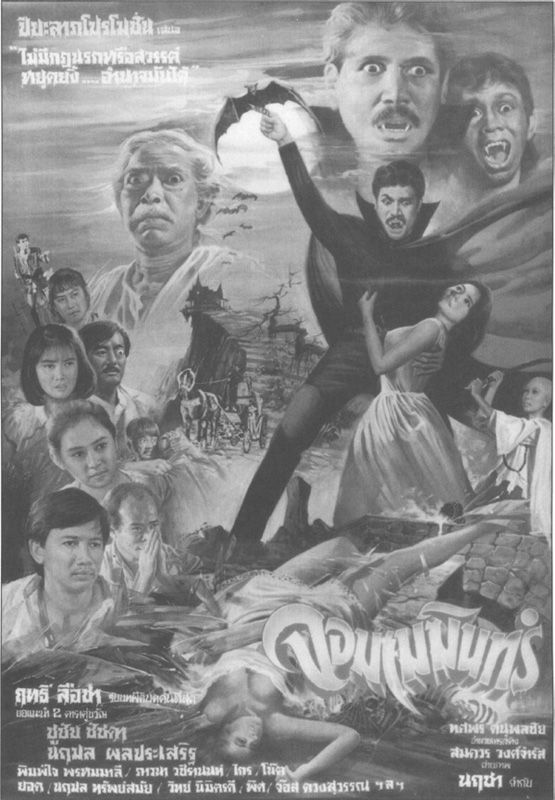MONDO
MACABRO
WEIRD & WONDERFUL CINEMA AROUND THE WORLD
PETE TOMBS
ST. MARTINS GRIFFIN  NEW YORK
NEW YORK
The author and publisher have provided this e-book to you for your personal use only. You may not make this e-book publicly available in any way. Copyright infringement is against the law. If you believe the copy of this e-book you are reading infringes on the authors copyright, please notify the publisher at: http://us.macmillanusa.com/piracy.
Contents

Beauty and the beast from the Indian film Wohi Bhayaanak Raat.
Introduction
Sometimes it feels like theres nothing left to discover. Bookshelves bend under the weight of tomes devoted to all things cult, B, or obscure. Films you might once have crossed town to see now turn up on new video labels every week. For those who still value the shock of the new, the special kind of thrill that comes from confronting previously unsung greatness, all this might be a little depressing. But dont despair. There are plenty of strange new worlds left to explore. Even if youll not exactly be boldly going where no one has gone before. India, Japan, Hong Kong, Mexico; all have a grand tradition of producing movies both weird and wonderful, filled with local colour as well as odd borrowings from the West. These are territories worth more than a passing glance from any fan of fantasy cinema.
Over the last forty or so years, the film industries of many countries seem to have followed a remarkably similar pattern: a golden age in the fifties or sixties, a slide into (s)exploitation in the seventies and a slow decline through the eighties, followed, in the nineties, by video and the inevitable dominance of Hollywood. Great films are still being made of course, all around the world, even if the scale of them is generally smaller. But the amazing energy of the sixties and seventies, the burst of low-budget optimism that produced Mexican masked wrestlers, Turkish superheroes, Japanese monster turtles and Indonesian mystic warriors (to name only a few!) seems to have been filtered away. The odd thing is that Hollywood today is asserting its dominance of the global market by making exactly those sort of costume capers and violent action fantasies that were the mainstay of so many Third World industries twenty-five years ago. The only difference is that Hollywood makes them with a bigger budget and far less imagination.
But we come to praise cinema, not to bury it. And theres plenty here to celebrate. Mondo Macabro is a peek into the treasure trove of fifty years of film from around the world. Weve sifted through the dross and picked out the dusty jewels. Some of them havent seen the light of day for far too long. The kind of films were looking at action pics, horror films, sex exploiters and monster movies are usually avoided by heavyweight histories. Which is odd, because in our encounters with Filipino action heroes, Hong Kong horror stars and Japanese bondage queens, weve learned far more about their respective countries than from any number of serious art films. Art cinema, from almost anywhere in the world, tends to follow the same gods of style; the French new wave and the Italian neo-realist still reign supreme. Genre films, on the other hand, always grow out of their countrys most deeply ingrained traditions. Like crates of oranges with their brightly coloured labels, these films are always instantly identifiable.

Turkish cinema has a crazy vitality rarely found in Hollywood movies.
But acquiring knowledge is only one of the joys of cinema. And probably the least important. Theres another route to go. In reading about these films you can simply gawp at the sheer awfulness of some of them while marvelling at the sheer weirdness of others. And thats a valid reaction too. After all, one of the purposes of fantastic cinema is to be fantastic to show you things you wouldnt otherwise see. If we manage to open your eyes to just a few of the wonders that the world of cinema has to offer, then our jobs been a worthwhile one.
The sections that follow arent intended to be exhaustive. How can you possibly hope to sum up Indian cinema in twenty-six pages, for example? The aim is to give you some of the background, some of the flavour and some of the important names and films that went into making each countrys cinema unique. Therell be things left out (and things included) that might surprise some readers. This is my personal view of whats important and fun; others will have a different perspective. I look forward to their books.
HONG KONG PART ONE
Crazy Kung Fu!

Japanese poster for Wang Yus Master of the Flying Guillotine.
And in the beginning, there was Bruce
The uninitiated might be forgiven for thinking that kung fu was some kind of oriental King Kong, wrote the British magazine Continental Film Review in August 1973. Not so, its a form of Chinese combat which Bruce Lee purveys without stint in the Hong Kong action pictures which are the newest fashion in filmgoing.
Even before people knew exactly what he did, he was a star.
Of course, martial arts in movies had been around a long time before Bruce Lee arrived on the scene. Their roots lie in techniques developed by the monks of the ancient Shaolin Temple. Built more than 1,500 years ago on the slopes of the Songshan mountain range in the remote plains of central China, the monastery was a centre of Chan or Zen Buddhism. This was a form of meditation brought to China by an Indian monk, Tamo. To sharpen their minds and tone their bodies the monks practiced chi exercises to control and harness their physical energies. Out of these exercises came many of the techniques that were developed into kung fu.
One of the paradoxes of the Shaolin training is that it is an apparently aggressive art devised as a means of controlling aggression. Anyone who has seen even a few of the classic kung fu movies from the early 1970s will be struck by how formalised and almost balletic many of the moves are; completely unlike a street fight, where punches are thrown merely to inflict damage. As the kung fu adepts say: Emphasise the inner meaning, not the outer strength.
With the arrival of Bruce Lee, martial arts found a different kind of hero. He had certainly studied the Shaolin techniques and knew their spiritual base. It was circumstance and above all his personal temperament that led Lee in a different direction. Growing up on the streets of Hong Kong in the mid-1950s, he acquired a reputation as a kid who never avoided the chance for a good scrap. What marked him out from traditional martial artists was his hunger to win at all costs.
Lee had been born in San Francisco where his father, a famous Chinese stage star, was working at the time. When things got too hot for young Bruce in Hong Kong, his mother took advantage of his dual nationality to send him back to America to attend college. It was there Lee developed and refined his study of the martial arts, eventually perfecting his own style, which he called jeet kune do, or Way of the Intercepting Fist. It was an aggressive, attacking style that suited him down to the ground. It favoured close physical contact and was perfect for the movies.












 NEW YORK
NEW YORK

